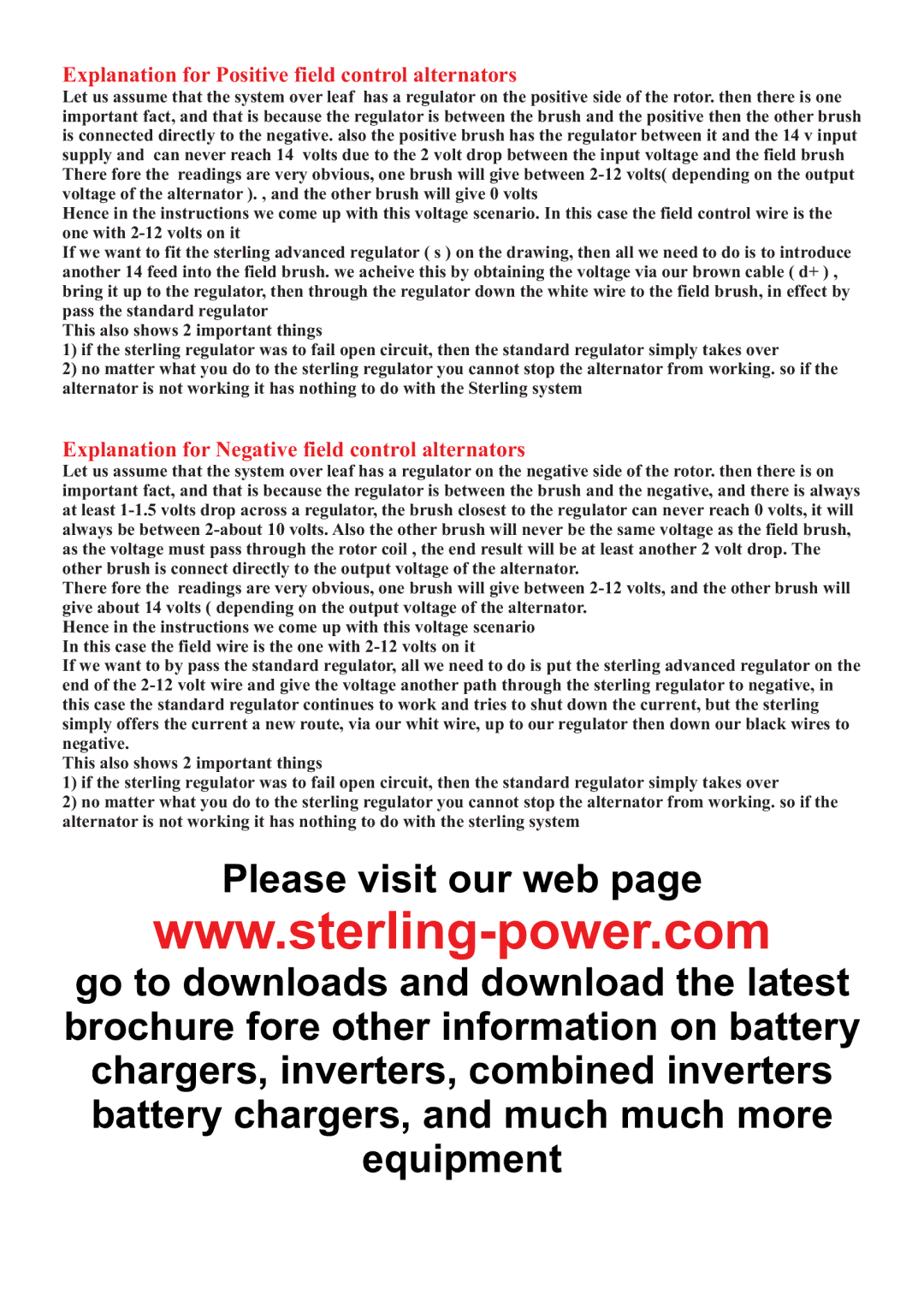Explanation for Positive field control alternators
Let us assume that the system over leaf has a regulator on the positive side of the rotor. then there is one important fact, and that is because the regulator is between the brush and the positive then the other brush is connected directly to the negative. also the positive brush has the regulator between it and the 14 v input supply and can never reach 14 volts due to the 2 volt drop between the input voltage and the field brush There fore the readings are very obvious, one brush will give between
Hence in the instructions we come up with this voltage scenario. In this case the field control wire is the one with
If we want to fit the sterling advanced regulator ( s ) on the drawing, then all we need to do is to introduce another 14 feed into the field brush. we acheive this by obtaining the voltage via our brown cable ( d+ ) , bring it up to the regulator, then through the regulator down the white wire to the field brush, in effect by pass the standard regulator
This also shows 2 important things
1)if the sterling regulator was to fail open circuit, then the standard regulator simply takes over
2)no matter what you do to the sterling regulator you cannot stop the alternator from working. so if the alternator is not working it has nothing to do with the Sterling system
Explanation for Negative field control alternators
Let us assume that the system over leaf has a regulator on the negative side of the rotor. then there is on important fact, and that is because the regulator is between the brush and the negative, and there is always at least
There fore the readings are very obvious, one brush will give between
Hence in the instructions we come up with this voltage scenario
In this case the field wire is the one with
If we want to by pass the standard regulator, all we need to do is put the sterling advanced regulator on the end of the
This also shows 2 important things
1)if the sterling regulator was to fail open circuit, then the standard regulator simply takes over
2)no matter what you do to the sterling regulator you cannot stop the alternator from working. so if the alternator is not working it has nothing to do with the sterling system
Please visit our web page
go to downloads and download the latest brochure fore other information on battery chargers, inverters, combined inverters battery chargers, and much much more equipment
